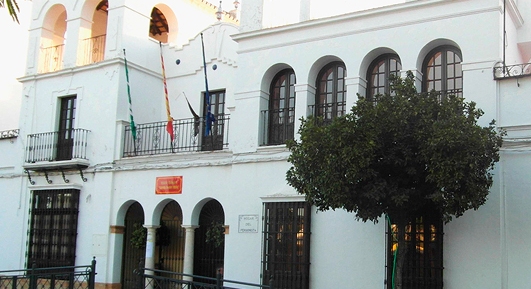Puebla de Cazalla, La

Village belonging to the Campiña region, located on a hill surrounded by fields devoted to the culture of cereals and olive trees, and some pasture land.
Some of its monuments are the Church of Nuestra Señora de las Virtudes, the Castle of Luna, the Church of the Convent of Nuestra Señora de las Virtudes, el Castillo de Luna, la Iglesia del Convento de Nuestra Señora de la Candelaria, the former prison or the Hacienda la Fuelonguilla and its Arab fountain. Birthplace of flamenco singers like José Meneses, la Niña de la Puebla and Moreno Galván.
Within its limits there are some places of great interest for tourists, including the basin of the Carbones river, the Pinalejo and the Presa.
History
Its origins seem to go back to the Tartessian locality of Callícula or Carula, mentioned by Pliny.Numerous artefacts from the Roman and Mozarab periods have been found in the AREA.
The ruins of the castle correspond to the period of Al-Andalus.
The first historic document that has references to the village has to do with the division of Seville by the king Alphonso X.
Following the Christian conquest it passed to the Order of Calatrava, and later to the Osuna domain. At present the main activity of the villagers is farming and the production of olive oil, along with the breeding of fighting bulls.
Eminent citizens
La Niña de la Puebla, flamenco singer.
José Meneses, flamenco singer.
Diego Clavel.
Manuel Gerena, flamenco singer.
Diego Ruiz Cortés, painter.
Francisco Moreno Galván, painter.

- Max 14
- Min 11
- Max 57
- Min 51
- °C
- °F


















